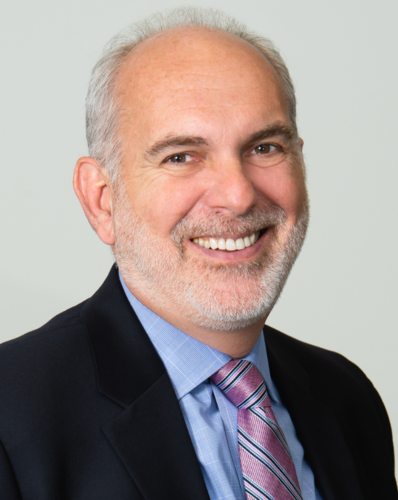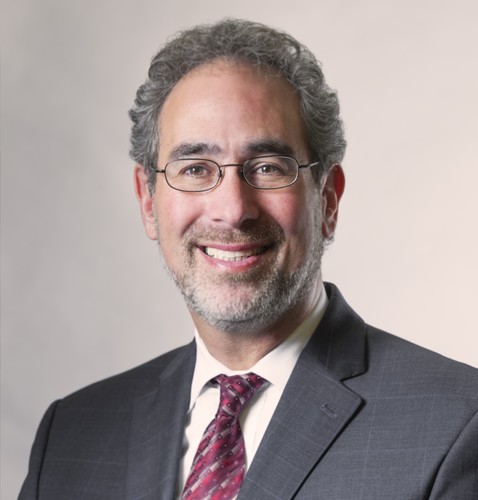Frequently Asked Questions About PPP Forgiveness
July 23, 2020 |
Client Alerts
The Payroll Protection Program (PPP) is potentially winding down for many borrowers, and those borrowers may now be eligible to claim forgiveness on their PPP loans. Forgiveness of the PPP loans is directed by both the CARES Act, as well as the recently enacted Payroll Protection Program Flexibility Act, which amended some of the terms of forgiveness within the CARES Act. With forgiveness now on the forefront of many borrowers’ minds, there are a number of frequently asked questions to be answered.
How does a borrower apply for forgiveness?
In order to receive forgiveness on all or part of a PPP loan, the borrower must apply for forgiveness. The borrower has two options in applying for forgiveness: the Loan Forgiveness Application Form (the Standard Application) and the Loan Forgiveness Application Form 3508EZ (the EZ Application). The EZ Application allows for a streamlined application process, but the borrower must meet one of the following criteria to be eligible to file the EZ Application:
- The borrower is a self-employed individual, independent contractor, or sole proprietor who had no employees at the time of the PPP loan application and did not include any employee salaries in the computation of average monthly payroll in the Borrower Application Form;
- The borrower both:
- Did not reduce annual salary or hourly wages of any employee by more than 25 percent during the Covered Period or the Alternative Payroll Covered Period compared to the period between January 1, 2020, and March 31, 2020; and
- Did not reduce the number of employees or the average paid hours of employees between January 1, 2020, and the end of the Covered Period; or
- The borrower both:
- Did not reduce annual salary or hourly wages of any employee by more than 25 percent during the Covered Period or the Alternative Payroll Covered Period compared to the period between January 1, 2020, and March 31, 2020; and
- Was unable to operate during the Covered Period at the same level of business activity as before February 15, 2020, due to compliance with requirements established or guidance issued between March 1, 2020, and December 31, 2020, by the Secretary of Health and Human Services, the Director of the Centers for Disease Control and Prevention, or the Occupational Safety and Health Administration, related to the maintenance of standards of sanitation, social distancing, or any other work or customer safety requirement related to COVID-19.
If the borrower does not meet one of the above criteria, they will be required to submit the Standard Application for forgiveness. All applications should be submitted to the lender the borrower originally used to apply for and receive the PPP loan.
How is forgiveness determined?
Forgiveness of the borrower’s PPP loan will be determined by their lender. The lender will review the borrower’s use of the PPP proceeds to determine whether or not they were used for permissible purposes.
The permissible uses of PPP proceeds are:
- Payroll costs, including health care and retirement benefits;
- Rent;
- Utilities; and
- Mortgage interest on loans outstanding prior to February 15, 2020.
The Payroll Protection Program Flexibility Act amended the CARES Act to require the borrower to use 60 percent of the loan proceeds on payroll costs, reduced from the 75 percent floor prescribed by the CARES Act. The 60 percent limit is a floor, and not a ceiling, which means the borrower is permitted to use more than 60 percent on payroll costs if they choose.
If the borrower only uses the PPP proceeds for the four permissible uses and has not laid off any employees and/or reduced any employees’ salary by more than 25 percent, they will be eligible for full forgiveness of their PPP loan. Any use of the PPP proceeds for a non-permissible use, or any layoffs or reductions in salary greater than 25 percent will reduce the potential PPP forgiveness for the borrower. A reduction based on layoffs or other reductions in the number of employees will lead to a reduction in the borrower’s forgiveness in a percentage equal to the percent reduction in the number of employees of the borrower during the Covered Period. A reduction of an employee’s salary by the borrower will result in a reduction in the borrower’s forgiveness in an amount equal to the dollar amount the borrower has reduced the employee’s salary beyond 25 percent.
When can a borrower apply for forgiveness?
There are three points in time the borrower can apply for forgiveness on their PPP loan:
- The end of the eight- or nine-week Covered Period originally prescribed by the CARES Act;
- The end of the twenty-four-week Alternative Covered Period prescribed by the Payroll Protection Program Flexibility Act; or
- At any point after the borrower has exhausted the PPP proceeds allocated to them.
Despite exhausting their PPP proceeds, it may be beneficial for the borrower to wait to apply for forgiveness if they have had to lay off employees or have reduced any employees’ salary by more than 25 percent. If one or both of those scenarios exist for the borrower, the Payroll Protection Program Flexibility Act provides that the borrower has until December 31, 2020, to remedy these layoffs or reductions in salary. This date was extended from the June 30, 2020, date provided by the CARES Act. If the borrower remedies their layoffs or salary reductions by December 31, 2020, they will be eligible for full forgiveness. This safe harbor may be extremely beneficial for the borrower and while the borrower may be eligible to apply for forgiveness once their eight- or twenty four-week period is over, if they are facing any reductions in their forgiveness, they should likely wait to attempt to bring back employees or increase their salaries prior to December 31, 2020, before doing so. This delay may allow for the borrower to utilize the December 31, 2020, safe harbor.
Once the borrower has decided to file for forgiveness, they should do so with the lender that originally facilitated their PPP loan. The borrower should coordinate with their lender to determine their process for submitting forgiveness applications.
Once a borrower receives forgiveness on their PPP loan, is that it?
Once the borrower receives a determination on forgiveness from their lender, there remains the possibility of an audit of their PPP loan by the Small Business Administration.
If the borrower has received a PPP loan in an amount less than $2 million, the Department of the Treasury has stated in its Frequently Asked Questions that they will be considered to have made the application in good faith. This guidance seems to suggest that few, if any, PPP loans that are under the $2 million threshold will receive any additional scrutiny from the Small Business Administration as a matter of course. However, it is important to note that the guidance merely suggests that no loans under the $2 million threshold will be subject to an audit to determine whether the application was made in good faith, but audits are possible for myriad other reasons.
If the borrower has received a PPP loan in an amount greater than $2 million, they are very likely, if not guaranteed, to be subject to an audit by the Small Business Administration. If and when the borrower of a PPP loan in excess of $2 million is audited, the Small Business Administration will be able to review the following:
- Borrower eligibility, including their access to other forms of capital and a review of the borrower’s affiliations, if applicable;
- Amount of the loan requested; and
- Borrower’s use of the PPP proceeds and the amount of forgiveness granted.
The borrower’s eligibility review will likely focus on two aspects: access to other forms of capital and affiliation. Questions 31 and 37 of the Department of the Treasury’s Frequently Asked Questions state that if the borrower had access to alternative sources of capital to use in lieu of a PPP loan, such as the equity or debt markets, they will be deemed to have made their application not in good faith. If an application is determined to have been made not in good faith, the borrower will be required to pay back the entire principal amount of the PPP loan, regardless of whether they have used the loan proceeds properly or not.
The Small Business Administration will also review the borrower’s affiliations. This review will determine whether the borrower is affiliated with any other entities due to a number of different factors including, but not limited to, common ownership, common management, or common interests. If the borrower is deemed to be affiliated with another entity based on the Small Business Administration’s affiliation rules, the employees of each entity will be aggregated. This aggregate number will be the employee count the Small Business Administration will use to determine the borrower’s eligibility for the PPP loan. The CARES Act provides that any borrower with 500 or less employees is eligible for a PPP loan. If two affiliated entities have more than 500 employees, neither entity is eligible for the PPP loan. If, after audit, the borrower is deemed to have affiliates, and those affiliates put the borrower above the 500 employee threshold, the borrower will be deemed to have made their PPP application not in good faith and will be required to repay the entire principal balance of the PPP loan.
If the borrower, be it through their initial forgiveness application to their lender, or through a Small Business Administration audit, is deemed to have all or part of their loan ineligible for forgiveness, that portion of their PPP loan will transition to a traditional loan. This loan will be repaid over the course of 5 years on a monthly basis at an interest rate of one percent.
Of course, if the borrower is determined to have made materially false representations or omissions in its application, the matter could be referred to the Department of Justice for civil or criminal investigation.
If you have any questions about PPP forgiveness or the PPP in general, please contact us at Lippes Mathias Wexler Friedman LLP.
Related Team
Related Content

In The news
Brian J. Bocketti's Appointment as Chief Growth Officer Featured in Multiple Publications
October 20, 2025


Press Releases
Lippes Mathias LLP Appoints Brian J. Bocketti as Chief Growth Officer
October 2, 2025


Press Releases
52 Lippes Mathias Attorneys Recognized in the 2025 Edition of Upstate New York Super Lawyers
September 29, 2025


Press Releases
Lippes Mathias Receives M&A Deal of the Year Award from The M&A Advisor in Connection with Schneider Electric’s Acquisition of Motivair Corporation
August 25, 2025

TAGS
COVID-19 PUBLIC LAW & POLICY TAX LABOR & EMPLOYMENT
PRACTICE TEAMS
CORPORATE BANKING & FINANCIAL TRANSACTIONS TAX PLANNING EMPLOYMENT LOBBYING & PUBLIC POLICY






